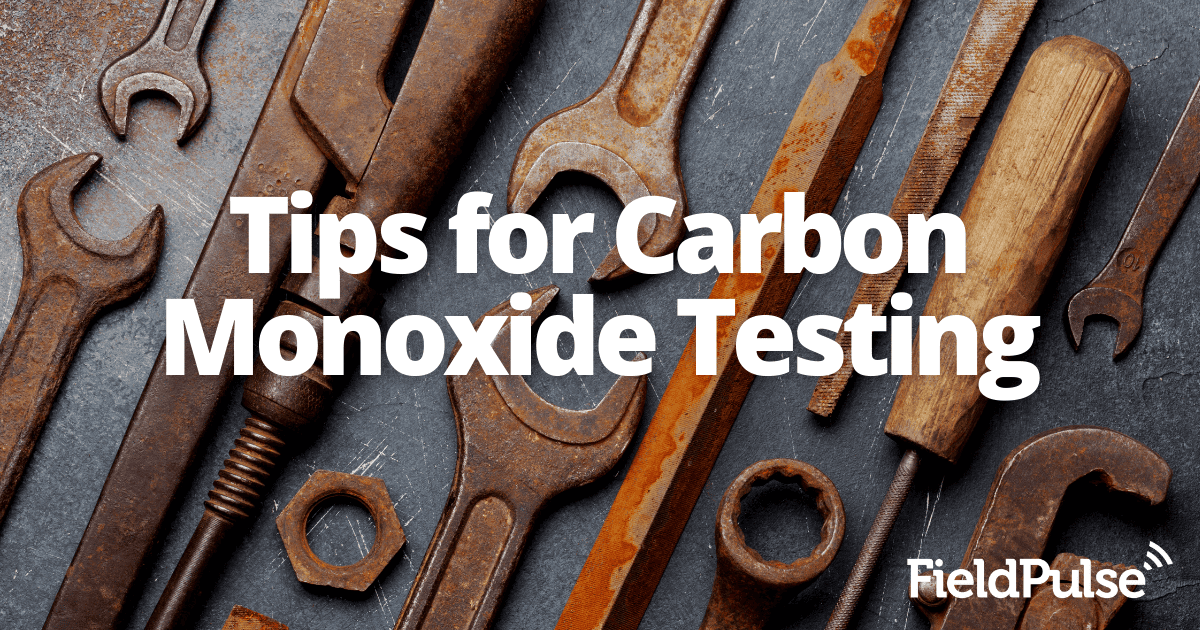Tips for Carbon Monoxide Testing
Aug 15, 2024

Carbon monoxide (CO) is a highly toxic gas produced as a result of combustion. Known as the silent killer, CO is non-irritating, tasteless, odorless, and colorless. Therefore, it is difficult to detect without professional equipment. If neglected, heating and cooling systems such as space heaters, boilers, and furnaces can generate high carbon monoxide levels.
More than 400 Americans die annually from unintentional CO poisoning. High levels of carbon monoxide cause the body to replace oxygen in the blood with CO, leading to confusion, chest pain, vomiting, nausea, headaches, and fatality. As an HVAC professional, part of your job involves ensuring that heating and cooling systems operate safely with suitable CO levels.
What Are Suitable Levels of CO?
When discussing carbon monoxide with your customers, emphasize that the goal should be to remove 100 percent of CO from the house. Therefore, any amount of CO is unacceptable and should be investigated. With that in mind, there are suitable levels of CO.
Carbon monoxide levels are measured in parts per million (PPM). The measurement is the mass of the contaminant per unit volume of water. To visualize what PPM looks like, add four drops of CO to a 55-gallon barrel and mix it. The mixture would produce a concentration of 1 ppm. What are acceptable levels of CO in the home?
- Low levels: 50 ppm or less
- Mid levels: 51 ppm and 100 ppm
- High levels: 100+ ppm
Keep in mind that there is still no official consensus for suitable CO levels in residential buildings. In commercial settings, OSHA prohibits worker exposure to more than 50 ppm. Something else to consider is that certain CO levels can trigger severe health problems or fatality in individuals who already have health problems. For instance, CO levels can affect individuals can trigger or intensify some conditions.
3 Types of Carbon Monoxide Tests
As a licensed HVAC professional, you have three main options for testing carbon monoxide in the home.
Option 1: Ambient Air Tester
Using an advanced ambient air sensor, you can measure the concentration of CO in the indoor air. Ambient air testing allows you to collect, store, and analyze multiple samples to identify CO presence and levels in the air. Ambient air testing ensures that the air throughout the house retains safe oxygen and CO levels, making the house safe to live in.
Any house that does not receive regular natural airflow (meaning the windows are regularly closed, and the air flows via the HVAC systems) should receive a routine ambient air test at least once a year. If the unit is 10 years old or more, testing two to three times per year may be necessary.
Option 2: Pump-Driven Analyzer
If an ambient air tester can detect CO levels in the air, a pump-driven analyzer can find the source. Using the analyzer, you can test flue air systems and warm air streams to track where the CO is coming from. As a bonus, a pump-driven analyzer will also allow you to test the ambient air. It is valuable in verifying that a system needs repairs. If a customer is suspicious of your claims, simply show them the test results.
The only downside of a pump-driven analyzer is the cost. A single unit can run between $300 and $700 depending on how many features you want – and there are plenty of advanced features. For instance, some devices contain a feature that monitors and graphs CO measurements over time. They can send the readings directly to your phone, computer, or printer. Analyzers do need to be calibrated before each use. Otherwise, they are a reliable device for testing CO levels and sources.
Option 3: Combustion Analyzer
Of all three options, the combustion analyzer is the most powerful and accurate. A combustion analyzer can perform the same functions as an ambient air tester and pump-driven analyzer. Plus, it can measure oxygen and carbon dioxide levels. This feature allows you to determine actual CO/O2/CO2 ratios, giving you a more detailed and accurate CO ppm reading.
A combustion analyzer can also help you pinpoint the location and cause of a CO leak. Before you purchase a combustion analyzer, you need to consider two things: cost and training. A unit can run between $600 and $2000, depending on the features you want. You may need some special training before you use the analyzer to understand the readings and how to calibrate and use the equipment.
Common Sources of Carbon Monoxide Leaks
While electric heating systems are often the primary source of carbon monoxide, they are not the only contributor. If your equipment detects high CO levels, but you can’t seem to locate it anywhere in the HVAC system, the leak may be coming from another location. Common sources of CO include:
- Charcoal/gas grills
- Vehicles left running in the garage
- Wood-burning stoves
- fireplaces
- Portable fuel-burning space heaters
- Gas water heaters
- Gas clothes dryers
- Gas ranges and stoves
As someone who cares for your customers, you may want to recommend a portable carbon monoxide meter after analyzing the problem and fixing the system causing the leak. A portable meter allows a homeowner to find the source of CO gas in any room in the house. You may also want to schedule a professional CO test once a year to keep your customers safe.
Upgrade Your Trade with FieldPulse
FieldPulse’s home service business software is the tool to help field service owners upgrade their trade.
With FieldPulse, you’ll have everything you need to run your business and manage your organization — all with industry-leading customer service and support. Contact FieldPulse today to schedule a free demo.